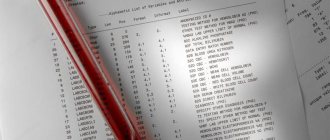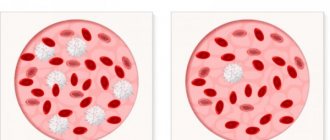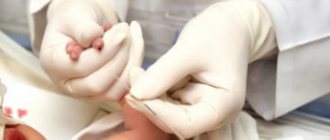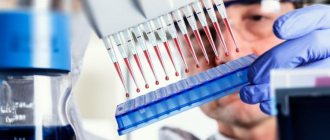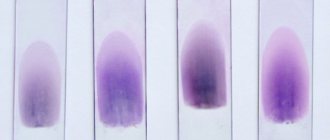To make any accurate diagnosis, each of us undergoes a procedure such as donating blood for analysis. In most cases, a sample from a finger is enough, but sometimes you have to take biomaterial from a vein. Often, during research, doctors use such a definition as a shift in the leukocyte formula. Having heard such an expression somewhere, not everyone will be able to understand what they are actually talking about.
It is worth noting that each person’s blood composition is individual, and it can change due to various biological processes. The leukocyte formula tells about these changes. And it is precisely this that will be discussed further in the topic of this article.
What is the leukocyte formula?
There are several types of white blood cells in our blood (more on this in the next section) and each of them performs its own task. The leukocyte formula, or leukogram, is the percentage of all types of blood cells. It also allows you to determine the overall level of leukocytes, thereby identifying a possible shift in the leukocyte formula. This has nothing to do with mathematics. Thanks to this formula, you can assess the general state of a person’s health, as well as identify various possible deviations.
In some cases, it is possible not only to recognize the disease, but also to determine the extent of its progression and subsequent outcome. In most cases, an analysis to determine the leukocyte formula is prescribed with general studies during a routine medical examination, if leukemia is suspected, and also as a control preventive measure.
Complete blood count of the child: monocytes (infectious mononucleosis)
The formed elements of the blood, called monocytes, may seem like the best, most useful. The fact is that they engage in phagocytosis. In simple, understandable language, this is the process of absorption and subsequent digestion of various bacteria, cells that have already died but remain in the blood, as well as other particles that have no place in our blood (foreign). The life of a monocyte lasts (approximately) 30 hours, during which it has time to form, grow and mature. At the last stage, at the stage of maturation, the monocyte is called a macrophage and in this state it lives for about one and a half to two months. At this time, he takes an active part in the ongoing immune reactions, “eating” (phagocytizing) bacteria, already dead cells, etc.
An increase in the number of these cells ( monocytosis ) is a sign of a prolonged infection that has passed into a sluggish state (tuberculosis, for example). Moreover, monocytosis very often signals a disease - infectious mononucleosis.
Types of leukocytes
In the blood of the human body, as mentioned above, there is more than one type of leukocyte. These important cells, which fight infectious threats and respond to tissue damage, are produced in the bone marrow. There are five types of them:
- lymphocytes;
- neutrophils;
- monocytes;
- basophils;
- eosinophils.
In this case, monocytes, basophils and eosinophils are considered heavy, and lymphocytes and neutrophils are considered light. Each of these types of blood cells differs from each other not only in structure, but also performs its own function. When examining the issue related to the shift in the leukocyte formula, it is worth getting to know them better.
Lymphocytes - these cells belong to the group of agranulocytes and represent the foundation of our immune system. Their main task is to recognize and eliminate foreign antigens, including cancer cells. They also take part in the production of antibodies. In turn, they are divided into three types:
- B cells;
- T cells;
- NK cells.
Monocytes are cells belonging to the mononuclear leukocyte group. They are oval in shape and contain a large nucleus, which contains chromatin, a large amount of cytoplasm with many lysosomes. When mature, they have a diameter of 18-20 microns. Monocytes are responsible for removing decaying cells, as well as bacteria and other foreign bodies, from the body. In addition to neutralizing microorganisms, they participate in phagocytosis.
Neutrophils belong to the granulocytic group and are phagocytes in the classical sense. In many ways, it is for their reason that the leukocyte formula shifts to the right or left. They are divided into rod and segmented. In addition to being motile, cells are capable of chemotaxis and can capture bacteria. But at the same time, neutrophils absorb cells or particles of relatively small size. They take part in the production of certain bactericidal substances, thereby performing a pest control function.
Basophils - also belong to granulocytic leukocytes and have an S-shaped nucleus. They contain large quantities of substances such as:
- histamine;
- serotonin;
- leukotriene;
- prostaglandin.
The granules are born in the bone marrow and enter the bloodstream already mature. They are quite large in size, larger than neutrophils and eosinophils. When an inflammatory process occurs, basophils are responsible for transporting white cells to the site of the lesion. They also take an active part in allergic reactions.
Eosinophils, like neutrophils, are motile and participate in phagocytosis. They can absorb foreign bodies, but being microphages they are not able to fight large microorganisms. In addition, eosinophils are distinguished by their ability to absorb and bind histamine and some other mediators of allergy and inflammation. If necessary, they can release these substances in the same way as basophils do.
Complete blood test of the child: basophils
This type (species) of cells is small in number and rarely found in the blood. The level of basophils in a general blood test, regardless of a person’s age, is approximately 1%. The clear purpose of their existence, their purpose has not yet been determined, but it is known that they take part in the process of blood clotting and in the body's reaction caused by allergies.
An increase in the number of these cells occurs extremely, extremely rarely, in exceptional diseases. In medicine, it is generally accepted that the absence of basophils in the blood does not mean anything and does not affect the diagnosis of diseases.
Children's body
At a young age, especially for newborns, a more pronounced shift in the leukocyte formula of children is observed. And there is a simple explanation for this - the body of a child or a newly born baby is not yet fully formed and various biological processes are actively occurring in it.
Moreover, unlike adults, the number of leukocytes in the blood, depending on the age of the child, is different. Throughout the entire childhood period, the child's leukocyte formula crosses twice. The first time this happens is after the baby is born. Since the mother’s body performed the main protective function for the fetus, the composition of the newborn’s blood is close to the normal level in adults.
When a baby is born, he immediately begins to get used to his surroundings, which is reflected in various processes occurring in his body. By the end of the first month of life, the level of lymphocytes increases significantly.
Being from the age of one to three, the child’s body is characterized by an unstable blood composition. That is, from time to time there is a shift in the leukocyte formula to the left in children or to the right. In this case, the concentration of lymphocytes and neutrophils can change throughout the day. Also, the reason for such a change may be certain conditions:
- hypothermia;
- a long walk in the sun;
- chronic diseases;
- changes at the gene level.
From 4 to 6 years, neutrophils take a leading position. However, in children over 6-7 years of age, the blood composition is identical to that of adults. During this entire period of hormonal changes, a 10-15% shift in the formula may be observed, which is normal.
The table below will show a more clear picture.
Changes in blood cell levels depending on the child's age
| Age | Name of blood cells | Norm, % |
| Newborns | lymphocytes | 20-35 |
| neutrophils | 65 | |
| monocytes | 3-5 | |
| basophils | 0-1 | |
| eosinophils | 1-2 | |
| First month of life | lymphocytes | 65-70 |
| neutrophils | 20-25 | |
| monocytes | 3-6 | |
| basophils | 1-2 | |
| eosinophils | 0,5-1 | |
| from 1 to 3 years | lymphocytes | 35-55 |
| neutrophils | 32-52 | |
| monocytes | 10-12 | |
| basophils | 0-1 | |
| eosinophils | 1-4 | |
| from 4 to 6 years | lymphocytes | 33-50 |
| neutrophils | 36-52 | |
| monocytes | 10-12 | |
| basophils | 0-1 | |
| eosinophils | 1-4 | |
| Over 6-7 years old | lymphocytes | 19-35 |
| neutrophils | 50-72 | |
| monocytes | 3-11 | |
| basophils | 0-1 | |
| eosinophils | 1-5 |
Thanks to such changes, the immunity of the child’s body is formed, while the child gets to know and understands the world around him.
Complete blood count of the child: plasma cells
The purpose of plasma cells in the formation of antibodies. For adults, the norm is their complete absence in the blood, but in a child, only one in 200–400 leukocytes can be found.
An increase in their number symbolizes the presence of a viral infection, but one that has a detrimental effect (destroys) lymphoid tissue: rubella, measles, chicken pox, infectious mononucleosis.
You can read about the reliability of materials related to child health by clicking on the link provided.
You can find more information on your child’s health in the section of our parents’ club of the same name by following the link provided, and/or in its subsection “Handbook for Parents.”
What else is useful?
1 year, 2 years, 3 years, 3.5 years, 4 years, blood test, hematocrit, hemoglobin, baby blood pressure, baby breathing, baby heartbeat, white blood cell count, white blood cells, baby, puberty, reticulocytes, platelets, Apgar score
27.08.2020
Possible deviations from the norm in children
Each type of white blood cell is unique in nature due to its individual role in the body. Any deviations that the leukocyte formula undergoes, a shift to the left and to the right, indicate the presence of some disease.
An increased level of lymphocytes or lymphocytosis is observed in the event of a viral and bacterial infection (whooping cough, influenza, rubella, measles, tuberculosis). In addition to them, a high concentration of cells is indicated by the presence of bronchial asthma, an autoimmune disease (Crohn's or Lyme disease), as well as an innate tendency to allergies. Feeding a child predominantly carbohydrate foods in the first year of his life usually leads to an increase in the number of lymphocytes. Their significant deficiency (lymphocytopenia) indicates that the bone marrow is susceptible to pathology and can no longer reproduce blood cells in the required quantity.
A high content of neutrophils also has its own name - Neutrophilia or a shift in the leukocyte formula to the left. In some cases, this is explained by the body's natural defensive reaction to some threat. For example, extensive inflammation and systemic lupus erythematosus (SLE). If a hormonal imbalance occurs in the body, then neutropenia or a lack of neutrophils occurs. But besides this, it is affected by extensive intoxication of the body.
A high concentration of monocytes leads to monocytosis, which can occur as a result of a fungal or viral disease. Here the clinical picture can be judged by external signs:
- lymphadenopathy;
- inflammation of the nasopharynx and larynx with neoplasms;
- enlarged liver and characteristic pain in the right hypochondrium.
In addition, an altered leukocyte count with a shift to the left or right may be associated with a lack of these cells (monocytopenia). This often happens if the body does not receive enough B vitamins and folic acid. Iron deficiency anemia often occurs.
A large number of basophils is called basophilia. However, this phenomenon is very rare and develops in isolated cases. The cause may be a dangerous pathological change such as tuberculosis, damage to the lymph nodes, myeloid leukemia, or blood oncology.
A shift in the leukocyte formula may be indicated by a high level of eosinophils, which occurs for one of two possible reasons. The first is that when consuming dairy products, including lactose and gluten, an allergic reaction occurs. The second reason is related to the presence of parasitic worms, which have been ignored for a long time. It is worth noting that eosinophilia cannot be determined by external signs. But the process can proceed at a rapid pace and give rise to irreversible processes.
Types of leukocytes in a leukogram
- Eosinophils are detected in allergies, parasitic infestations, infectious and autoimmune diseases, as well as in cancer.
- Neutrophils help fight acute infections by destroying the cell membranes of pathogenic microorganisms and their further phagocytosis (capture and destruction of foreign cells). They are divided into:
- Myelocytes (nascent) and metamyelocytes (young) cells - these should not be present in normal samples. They appear only in cases of severe infectious pathologies or blood diseases, accompanied by inhibition of the hematopoietic function of the bone marrow.
- Band neutrophils (young) - their number begins to increase during bacterial infections, when segmented neutrophils cannot cope with their task.
- Segmented cells (mature) are quantitatively superior to others. Needed for normal functioning of the immune system.
- Lymphocytes are a kind of cleaners: they find, identify and destroy antigens, and also promote additional production of antibodies by the body to ensure immune memory (remembering and quickly recognizing foreign agents).
- Monocytes - their main task is to absorb and process dead cells, bacterial, viral, etc. agents, atypical cells, fragments of own phagocytes, etc.
- Basophils - the exact functionality of these cells has not been reliably studied. It is known that they regulate allergic reactions and blood clotting processes. They are activated when a focus of inflammation occurs.
Plasma cells (plasmocytes) are necessary for the production of antibodies. Normally, they are allowed in the analysis in children, but they should not be present in adults. Plasmocytes appear only during acute pathology.
Indications for testing
Indications for donating blood to determine the leukocyte formula are the following cases:
- Mandatory examination by a doctor, which should be completed annually.
- If there are complications after the disease.
- If you experience severe fatigue.
As many experts note, such a blood test should not be underestimated. A shift in the leukocyte formula will make it possible to diagnose almost any acute or chronic disease, including oncology.
Only the study will give accurate answers if it is carried out in combination with other tests. Only in this case can an accurate diagnosis of the disease, as well as its development and outcome, be made.
Complete blood count of the child: eosinophils
Similar to neutrophils, eosinophil cells contain certain enzymes or granules within themselves. Eosinophils are neutralized not by bacteria, but by immune complexes. When taking a general blood test from a healthy child, their number is most often relatively small (about 1-4%, no more). But their numbers increase significantly, which is called eosinophilia , with various allergies, intestinal diseases, even skin diseases, etc.
Very often, eosinophelia occurs after severe, especially bacterial infections.
Analysis procedure
Before undergoing the blood donation procedure to determine the leukocyte formula, preparation is needed. It is simple, because all you need to do is not eat 3-4 hours before the test and avoid drinking alcohol. You also need to avoid overusing physical and emotional stress. Venous blood is taken for examination.
Moving directly to work, the laboratory assistant places the material on a special glass plate, which he places under a microscope. Next, the leukocyte formula of the blood is determined; a shift to the left or right is detected during the screening of several hundred blood cells so that the overall level of all leukocytes can be determined. The next step is to distribute the cells over the entire surface. In this case, the heavy granules are concentrated at the edges, and the light ones are placed in the center.
There are often two main methods used to count white blood cells:
- Schilling method - the smear is divided into 4 parts.
- Filipchenko's method - the smear is divided into three parts.
The transcript of the result will be ready after several days of examination, and its analysis will be carried out by the attending physician.
conclusions
This analysis is easy to perform, does not require expensive equipment and reagents, and can therefore be carried out in any laboratory.
It is very informative and can be used during initial diagnosis. It allows you to establish the presence of infection, parasites and allergic reactions, suspect the presence of malignant neoplasms, immune pathologies, blood diseases, etc.
We would like to immediately present a table of the normal content of all components of the leukocyte formula, and then we will talk in more detail and more clearly about each cell, its purpose and functions.
Decoding the results
Deciphering the leukocyte formula should only be carried out by an employee specially trained in this profile. But you can simply compare the results obtained with the norm. Often, when the leukocyte formula of blood is analyzed, shifts are determined during manual calculations. But some clinics have taken the modern route and use special equipment for this - an analyzer.
As a rule, it works in automatic mode, but in case of a sharp deviation from the norm, a specialist takes over the work. For comparison, a person will be able to examine 100-200 cells, while the apparatus is much larger – several thousand. But, despite the fact that modern equipment allows for more accurate calculations, errors inevitably occur. This may be influenced by several reasons: incorrect blood sampling, improperly prepared smear and other factors.
Shift formula left
The term shift of the leukocyte formula to the left refers to a high concentration of band neutrophils, which indicates the occurrence of an inflammatory process. This can also happen due to:
- Infectious disease.
- Acid-base balance disorders.
- Comatose state.
- Physical overexertion.
Along with an increase in the concentration of neutrophils, a certain amount of metamyelocytes (not yet matured leukocytes) enters the blood.
In a healthy body they are found only in the red brain. However, due to the strong inflammatory response, most healthy neutrophils quickly die. In this case, the bone marrow has to send immature blood cells to the lesion.
Shift formula right
The definition of a shift in the leukocyte formula to the right means a reduced content of band neutrophils. But at the same time the number of segmented cells increases. Often accompanied by chronic liver and kidney disease, including megablastic anemia. This can also be affected by blood transfusions.
The importance of the leukocyte formula is difficult to overestimate, since most changes occurring in the body lead to its shift. The concentration of some blood cells increases due to a decrease in the number of others.
Normal indicators
As is already known, any deviation from the norm implies the presence of significant changes in the body. Normal lymphocyte counts are 19-37% or 1.2-3x109 pcs/l; neutrophils (specifically segmented ones) – 47-72% or 2-5.5x109 pcs./l; band neutrophils – 1-6% or 0.04-0.3x109 pcs./l; monocytes – 3-11% or 0.09-0.6x109 pcs./l; basophils – 0-1% or 0-0.065x109 pcs/l; and finally, the concentration of eosinophils is 0.5-5% or 0.02-0.3x109 pcs./l.
Based on the data obtained from the results of the study, the doctor confirms or rejects the alleged diagnosis. And if a shift in the leukocyte formula has not occurred and everything is within normal limits, then there is no cause for concern.
